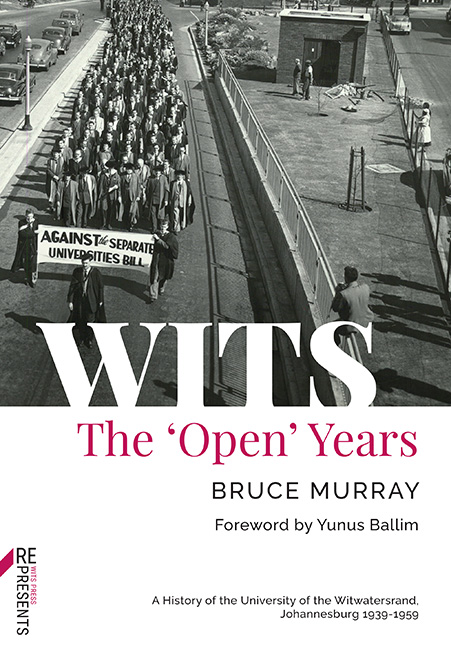2 - Raikes and the ‘Open University’ 1939–1948
Published online by Cambridge University Press: 24 November 2023
Summary
The war years at Wits were the most dramatic period of advance for black students (African, Indian, coloured), and also Chinese students – collectively referred to at the time as ‘non-Europeans’ or ‘non-whites’ – prior to the transformations of the 1980s. World War II provided a rare opportunity to alter the policy direction of the University, and make Wits very much more of an ‘open university’ than ever before contemplated. The central development during the war was the decision to open the Medical School to ‘non-European’ students by admitting them to the clinical years. This represented a major departure from previous policy, and the war was directly responsible.
Before the war the few black doctors in South Africa had all trained overseas, with the notable exception of J.T. du Randt, a coloured doctor who had qualified at Wits in 1933. A.B. Xuma, who became President General of the African National Congress in 1940, graduated from Northwestern University, Chicago, in 1926. Otherwise it was the Scottish universities, Glasgow and Edinburgh, and also Trinity College, Dublin, that served as the main training grounds for black South African doctors. By putting an effective end to overseas migration for university study, the onset of war in Europe meant that aspirant black doctors had to receive their training locally, or else not at all. That fact, and the warning of the Botha Committee on Medical Training in South Africa that the country’s black population was in desperate need of basic medical services, provided the main levers to open up clinical training for black medical students at Wits.
While the University’s Private Act and Statutes had never allowed for the exclusion of any student on racial grounds, Council had not formally endorsed the policy of admitting blacks to Wits until 1934; as a result, at the outbreak of war there were no more than a few dozen black students on campus; this included four Indians in the Medical School. The position in the Medical and Dental Schools, however, was that blacks were excluded from the clinical years on the stated ground that there were no clinical facilities available for them.
- Type
- Chapter
- Information
- WITSThe 'Open' Years, pp. 27 - 57Publisher: Wits University PressPrint publication year: 2022



